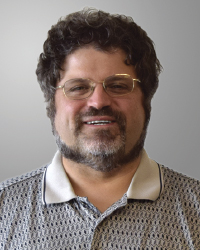 When ancestors of modern endoscopy first peered into cavities of the human body, they used candlelight or burned a mixture of alcohol and turpentine, which illuminated a thin tube equipped with a lens. In the 19th century, the French inventor Antonin Jean Desormeaux, who is regarded as the father of endoscopy, used such a device to guide chemical cauterization, a simple and painful procedure in which a chemical agent is applied to infected tissue. Early instruments were rigid, which meant that they could damage the cavities and vessels that researchers were intending to explore.
When ancestors of modern endoscopy first peered into cavities of the human body, they used candlelight or burned a mixture of alcohol and turpentine, which illuminated a thin tube equipped with a lens. In the 19th century, the French inventor Antonin Jean Desormeaux, who is regarded as the father of endoscopy, used such a device to guide chemical cauterization, a simple and painful procedure in which a chemical agent is applied to infected tissue. Early instruments were rigid, which meant that they could damage the cavities and vessels that researchers were intending to explore.
At the turn of the 20th century, endoscopes became increasingly flexible and were primarily used for examination of the gastrointestinal tract. But the world of endoscopy changed in the 1950s when fiber optics were first built into the design of these devices. A 1954 paper by H.H. Hopkins and N.S. Kapany at the Imperial College of Science and Technology in London described their use of glass fibers to transmit light and images through tight spaces. The rest is history, and their work sparked a series of innovations that ultimately led to not only the furtherance of gastroenterology but also urology, cardiology, and even neurology.
Today, fiber-based endoscopy is guiding more advanced procedures than those early users likely ever envisioned. Coherent fiber bundles, or even single multimode fiber, have been a surgical companion to laser ablation, for example.
Researchers at Osaka University in Japan recently designed a miniaturized endoscopic laser system that was constructed around a fiber bundle and thin tip that directs a focused laser inside narrow organs. A collimated laser beam was delivered to a two-axis galvo mirror system and then to an objective lens where it was directed to targets at the proximal end of the fiber bundle. At the same time, a tube lens was used to collect information for a CMOS camera as the experiment was carried out, wherein researchers accomplished both coagulation and ablation in their samples.
And, as I explain in my feature on fiber-based endoscopy here, fiber could prove its worth on the cutting edge of medical treatment, and in revolutionizing everyday procedures. In addition to clarifying the extent of plaques and tumors, catheters with fiber at their core could be used to administer many common gastrointestinal procedures, with fiber Bragg gratings that could measure pressure at various points along the esophagus. The same could apply to the probing of the vascular system.
The desire for this capability, particularly for gastrointestinal examinations, is clearly growing. According to Future Market Insights, the flexible endoscope market is expected to rise at a compound annual growth rate of 6.4% to $16.7 billion worldwide by the end of 2033, increasing from $8.4 billion in 2022. With rising chronic disease, endoscopic technology centered around fiber will continue to probe at the source for advanced diagnostics throughout the body.
Enjoy the issue!
Douglas J. Farmer
